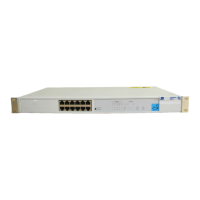DUA1640-5AAA02
PS Hub 50 2-3
How Does the Segment Switch Work?
Information is passed around the network in small units, called
packets
.
These packets contain various Ethernet addresses called
MAC addresses
,
which are unique addresses that are permanently stored within each
piece of network equipment:
■
Source address — the MAC address of the equipment that sent the
packet.
■
Destination address — the MAC address of the equipment that the
packet is intended for.
The network adapters in your workstations have a MAC address which
is used to identify the workstations on the network. An example of a
MAC address is ‘08004e0849d1’.
Using the source addresses, the PS Hub 50 unit’s segment switch can
learn
which workstations are connected to each of the cascaded
segments. This information is stored in a
switching database
, which is a
list containing each source address together with the associated
cascaded segment. Using this database, the segment switch can then
selectively pass future packets to the relevant cascaded segment.
When the switch database is full, no new addresses are learnt. The
segment switch regularly removes unused learnt addresses from the
switch database (known as
ageing
), if they have not been used after
30 minutes (the ageing period). Using the web interface, you can make
address entries permanent so that they are not removed by the ageing
process.
The segment switch has the following features:
■
Support for multiple PS Hub 50 units in the same stack.
■
Switch database with a capacity of 500 workstation addresses.
■
Self-selecting switch mode:
■
If a 100Mbps transceiver module is fitted, the segment switch is
in
LOI
(Local Office Interconnect) mode — The 100Mbps
transceiver module port behaves like a
downlink
port. A
downlink port is a port that is typically connected to the rest of
the network. All packets with an unknown destination address
are forwarded to the downlink port only, and addresses are not
learnt on this port.

